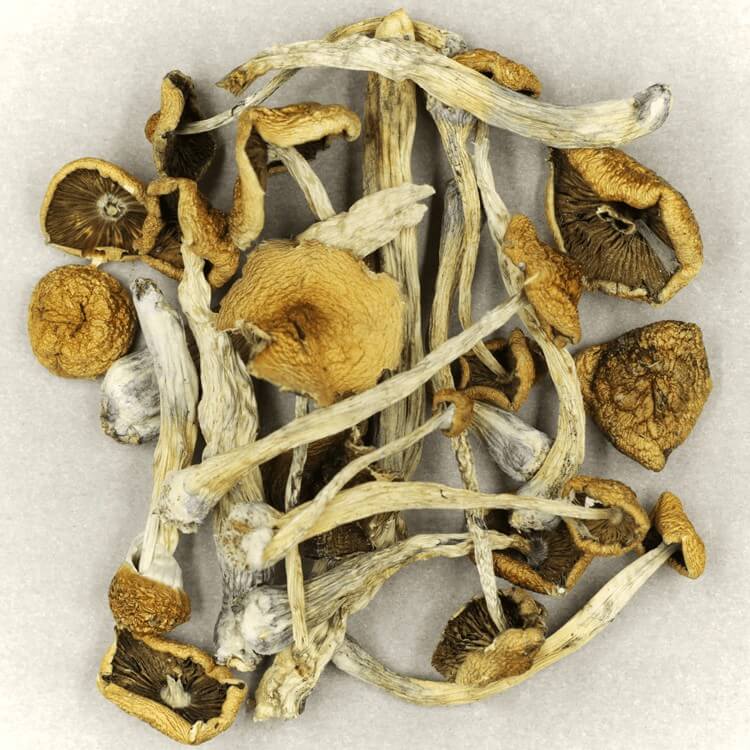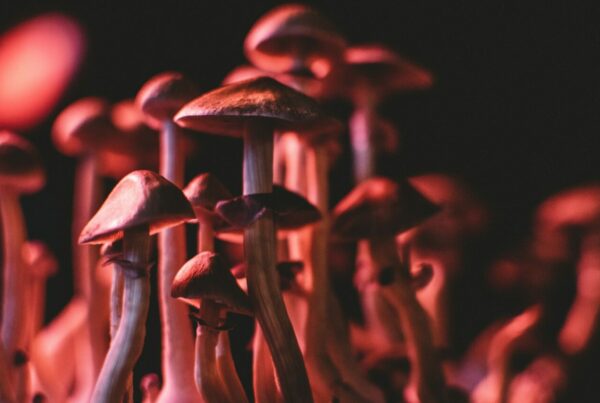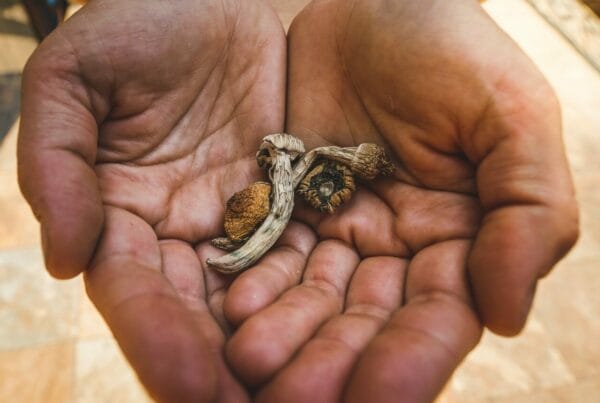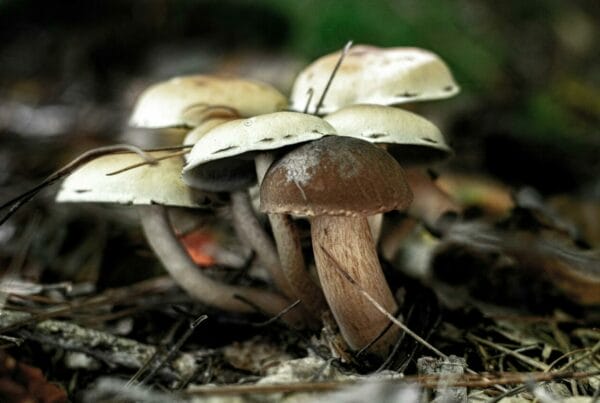The strength of Psilocybe mexicana was once viewed as mythical. However, the narrative has significantly changed, thanks to continuing psilocybin research. The psychedelic research community is consistently unveiling its therapeutic benefits, progressively bringing about its acceptance in the medical realm. Experts regard this evolving field as promising and are tirelessly working towards determining safe dosage levels for medicinal usage.
Key Takeaways
- Researchers are using innovative methods like liquid chromatography combined with tandem mass spectrometry to ascertain the potency of mushrooms.
- Psilocybe Mexicana, along with other mushroom varieties, is under investigation in clinical trials to evaluate its potential therapeutic applications.
- The genetic diversity in magic mushrooms is crucial for creating a precise dosage guide.
Psychedelic Mushrooms: From Unknown to Research Milestones
In the past, only a few conditions were known to benefit from Psilocybe Cubensis. However, psilocybin is currently making remarkable progress in discovering its concealed medicinal attributes.
Specialists are harnessing the potential of Psilocybe Mexicana and other powerful strains for thorough research and clinical trials. Regardless of whether the subjects are in vivo or in vitro, this strain proves effective in presenting the genuine effects and benefits of the fungal species.
Psychedelics’ Emergence in the Market
From being a hidden gem to a revealed treasure—ongoing advancements and discoveries are progressively capturing the public’s attention, especially those seeking therapeutic remedies. Conventional treatments for mental health disorders often prove inadequate, leading individuals to search for more effective alternatives.
Welcome magic mushrooms.
Patients grappling with mental health challenges are resorting to psilocybin, which has demonstrated potential in treating depression, alcohol addiction, anxiety, compulsions, tics, chronic pain, among other conditions.
Currently, medical professionals are exploring innovative approaches to determine the perfect dosage for safe administration to patients. Significantly, a research team from the University of Texas has devised a model to extract psilocybin and psilocin concentrations.
It’s achievable to clinically determine the potency of magic mushrooms.
The Distinct Traits of Mexicana
The study of Golden Teachers, Blue Meanies, and B-Plus mushrooms has been extensive. However, for a comprehensive understanding of safe magic mushroom consumption, it’s crucial to investigate other species as well.
The Mexicana species has emerged as a popular subject for research. Its appeal stems not only from being one of the oldest species but also from its relatively low potency, which potentially aligns with the standards of medicinal drugs.
Even though the potency of this Mexican strain isn’t as high as that of other species, it can still produce similar effects. As more patients turn to microdosing, this strain becomes an increasingly attractive option.
Like other strains, it maintains consistent levels of psilocybin and psilocin. So, why choose this over other comparable strains? Its historical and anthropological relevance holds the key.
Delving into a Rich “Mexican” Legacy
Psilocybe mexicana, in ancient times, naturally sprouted in moss. These psilocybin mushrooms were highly regarded by indigenous populations for their wide-ranging applications, often linked to mystical or supernatural occurrences.
Let’s focus on Mexican mushrooms. More than 2000 years ago, these mushrooms’ initial documented use was by the inhabitants of North and Central America. The Aztecs, an ancient civilization, labeled these mushrooms as the “food of the Gods,” or “teonanácatl” in their language.
If the Aztecs were present today, they would acknowledge the transformative, emotionally potent, and mind-stabilizing effects of the Mexicana—without the need to comprehend these contemporary terms.
Despite different cultivation techniques, this mushroom has managed to preserve its innate psilocybin concentrations, affirming its originality. This genuineness is a widely recognized standard that researchers and psychedelic research institutions greatly appreciate.
Innovative Practices for Psilocybin Content and Potency Evaluation
A team of ten researchers from the University of Texas at Arlington and other research institutions devised a novel method for testing the potency of psychoactive compounds in mushrooms. This groundbreaking measurement approach merges liquid chromatography and tandem mass spectrometry.
Here are a couple of groundbreaking methods:
- Liquid chromatography serves as a technique for separating and analyzing various components in a chemical mixture. In this context, it’s employed for identifying active chemical compounds in mushrooms. The process entails circulating a liquid sample through a column packed with a solid substance (known as the stationary phase). As different chemicals within the sample interact uniquely with the stationary and mobile phases, they separate at different speeds while moving through the column.
- Spectrometry primarily investigates how matter interacts with electromagnetic radiation across different wavelengths. It identifies and quantifies substances by observing specific wavelengths of light absorbed and scattered by molecules. This facilitates the assessment of the electronic, vibrational, and rotational states of the chemical.
This testing method was used on five varieties of magic mushrooms. The researchers found that the average total levels of psilocybin and psilocin across these varieties ranged between 0.879 and 1.36. These concentrations exceeded many other types such as Bull Run and Cambodian. The researchers further corroborated the accuracy of their study by comparing their findings with data from other independent laboratories.
The concordance of the results obtained from the two separate labs further reinforced the reliability of their testing method to precisely gauge the potency of the mushrooms.
If endorsed by experts, this could contribute a new set of techniques to the existing psychedelic potency testing methods, thereby acting as an additional safety precaution against erroneous dosage determinations.
Expanding Research to Include Other Species
Widening the scope of research to encompass other species holds significant benefits. It not only enriches our knowledge about the health advantages linked to various strains, but also establishes preliminary data regarding the effects of less potent mushrooms.
Moreover, it helps in educating individuals about the influence of different dosages on the psychedelic experience. By contrasting varieties like Mexicans with stronger strains such as Psilocybe Cubensis, researchers can ascertain how diverse concentrations of active compounds may affect therapeutic results.
For example, the Blue Meanies strain yields more potent hallucinogenic effects, potentially useful for treating conditions like depression. Conversely, strains with lower potency may be more suitable for microdosing or subtle uses, like improving mood or focus.
Variation in Genetics Enhances the Safety of Treatments
It’s less widely recognized that different cultivars or varieties carry distinct genetic profiles and
Psychedelic mushrooms differ in potency, chemical composition, and effects. This diversity allows healthcare professionals to select the most suitable type for specific medical applications and adjust doses to meet individual requirements, thereby minimizing risks and maximizing benefits.
Take, for instance, Psilocybe Semilanceata (Liberty Caps) or Psilocybe cyanescens. These mushrooms have distinct alkaloid profiles that might be effective for treating anxiety. Conversely, other artificially cultivated mushrooms may be better suited for addressing substance abuse or compulsive behaviors. This diversity enables the development of personalized treatments with enhanced safety and efficacy.
From this, we can infer that the genetic diversity in psychedelic mushrooms, in conjunction with innovative methods of potency assessment and identification, is essential for the advancement of safer medical treatments.
Enhanced Safety in Medical Use
Let’s contemplate the impact of safer dosage practices.
- Decreased risk of overdose: Accurate dosing eliminates users’ concerns about overdose, suggesting that product labels should be made more straightforward to avoid consumer misunderstanding.
- Increased predictability: With more precise dosing, individuals can anticipate the effects or experiences they might encounter during their trips. This can reduce intense sensations and anxiety, thereby increasing patient satisfaction.
- Uniform measurement: In one way or another, accurate dosing can foster a standard metric that allows people to easily refer to charts for potential effects.
Experience the Advantages of Accurately-dosed Shrooms through Advanced Potency Tests | Buy Magic Mushrooms Online at Magic Mushrooms Vancouver Canada
If these two groundbreaking techniques continue, you’ll no longer encounter unforeseen effects. Combine this with smart online shopping at Magic Mushrooms Vancouver Canada. We offer dried mushrooms that provide a serene, relaxing psychedelic experience without excessive psychoactivity. Buy psychedelics online in Canada via Magic Mushrooms Vancouver Canada.
Frequently Asked Questions
Are Psilocybe Mexicana and Big Mexicans the same?
No, Big Mexicans and Psilocybe Cubensis are separate strains of mushrooms, so it’s crucial not to confuse them. Big Mexicans have a higher compound concentration, ranging from 0.5% to 1%, making them significantly more potent.
Always remember, Psilocybe Cubensis differs from other types in its appearance. It often has a bell-shaped cap, in contrast to the conical shape commonly seen in others.
What’s the highest concentration found in Mexican mushrooms?
In Mexican mushrooms, the concentrations of psilocybin and psilocin can reach a maximum of 0.25%. While these levels are relatively low and similar to the Golden Teacher strain, they can still induce intense psychedelic experiences, which could potentially offer health benefits.
What dosage is considered medically safe?
Usually, a dose ranging from 1 to 2 grams is recommended. However, the exact dosage can depend on a variety of factors, including consumption methods, individual metabolism, and the specific strength of the strain. Some prefer to take sub-threshold doses, between 0.05 (50mg) and 0.025 grams (250mg), in order to mitigate the hallucinogenic effects.





